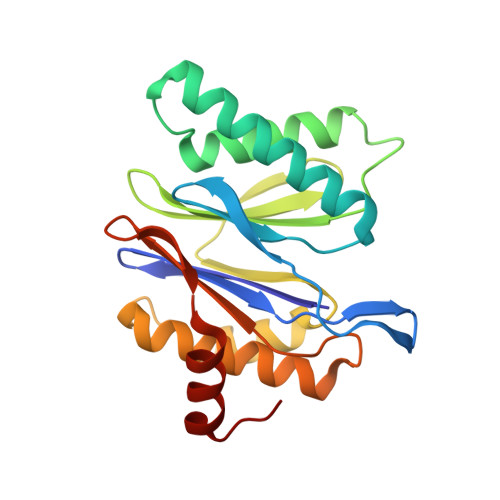Mechanism of gate opening in the 20S proteasome by the proteasomal ATPases.
Rabl, J., Smith, D.M., Yu, Y., Chang, S.C., Goldberg, A.L., Cheng, Y.(2008) Mol Cell 30: 360-368
- PubMed: 18471981
- DOI: https://doi.org/10.1016/j.molcel.2008.03.004
- Primary Citation of Related Structures:
3C91, 3C92 - PubMed Abstract:
Substrates enter the cylindrical 20S proteasome through a gated channel that is regulated by the ATPases in the 19S regulatory particle in eukaryotes or the homologous PAN ATPase complex in archaea. These ATPases contain a conserved C-terminal hydrophobic-tyrosine-X (HbYX) motif that triggers gate opening upon ATP binding. Using cryo-electron microscopy, we identified the sites in the archaeal 20S where PAN's C-terminal residues bind and determined the structures of the gate in its closed and open forms. Peptides containing the HbYX motif bind to 20S in the pockets between neighboring alpha subunits where they interact with conserved residues required for gate opening. This interaction induces a rotation in the alpha subunits and displacement of a reverse-turn loop that stabilizes the open-gate conformation. This mechanism differs from that of PA26/28, which lacks the HbYX motif and does not cause alpha subunit rotation. These findings demonstrated how the ATPases' C termini function to facilitate substrate entry.
Organizational Affiliation:
Fachbereich Biologie, Chemie, Pharmazie, Freie Universität Berlin, Takustrasse 3, 14195 Berlin, Germany.















